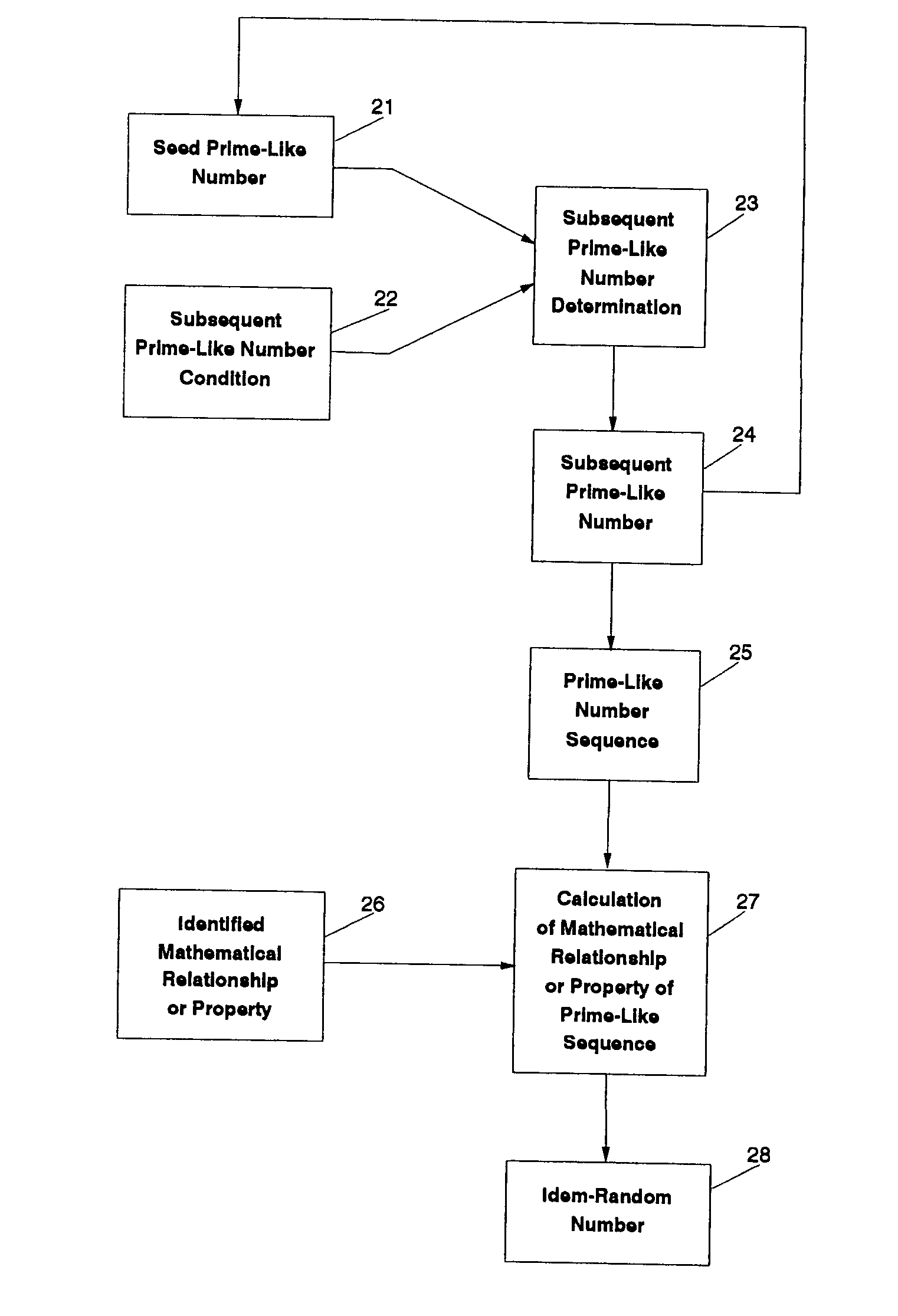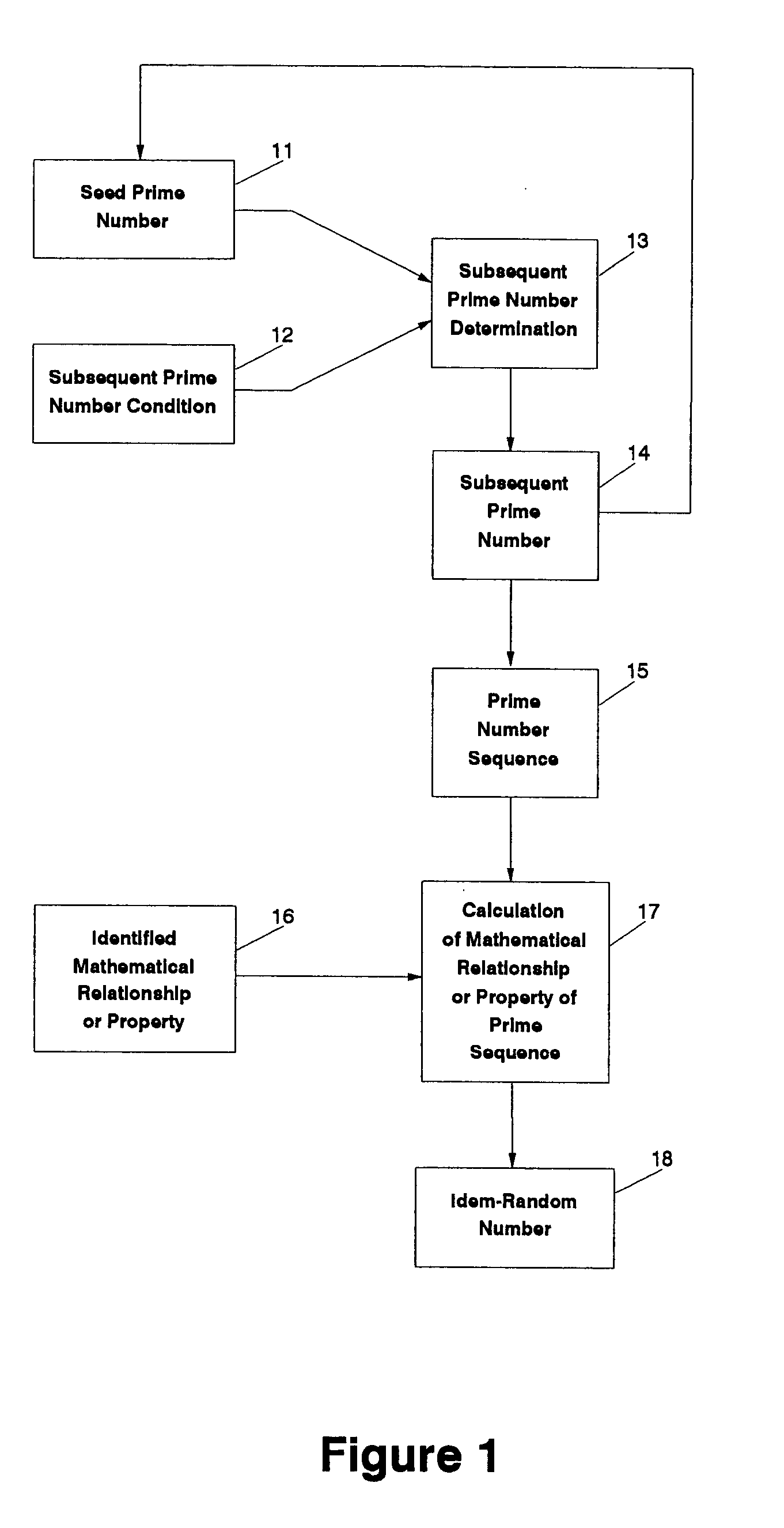Prime-number-based method and apparatus for generating random numbers
a prime number and random number technology, applied in the field of prime numbers, can solve the problems of no new “randomness” is introduced into the process, and the pseudo-random number sequence is extremely difficult to predi
- Summary
- Abstract
- Description
- Claims
- Application Information
AI Technical Summary
Benefits of technology
Problems solved by technology
Method used
Image
Examples
Embodiment Construction
[0028] Referring to FIG. 1, a block diagram of the prime-number-based idem-random number generator method and apparatus of the claimed invention is shown which incorporates a seed prime number input 11, a subsequent prime number condition 12, application of the subsequent prime number condition 12 through a subsequent prime number determination process 13 to produce a subsequent prime number 14, iterative application of the subsequent prime number determination process 13 to each subsequent prime number 14 to generate a prime number sequence 15 comprising the seed prime number 11 and each subsequently determined prime number 14, determination of an identified mathematical relationship or property 16, and a calculation process 17 for determining the identified mathematical relationship or property 16 of the prime number sequence 15 to generate an idem-random number output 18.
[0029] The first step in the idem-random number generation process is the identification of the first prime n...
PUM
 Login to View More
Login to View More Abstract
Description
Claims
Application Information
 Login to View More
Login to View More - R&D
- Intellectual Property
- Life Sciences
- Materials
- Tech Scout
- Unparalleled Data Quality
- Higher Quality Content
- 60% Fewer Hallucinations
Browse by: Latest US Patents, China's latest patents, Technical Efficacy Thesaurus, Application Domain, Technology Topic, Popular Technical Reports.
© 2025 PatSnap. All rights reserved.Legal|Privacy policy|Modern Slavery Act Transparency Statement|Sitemap|About US| Contact US: help@patsnap.com



